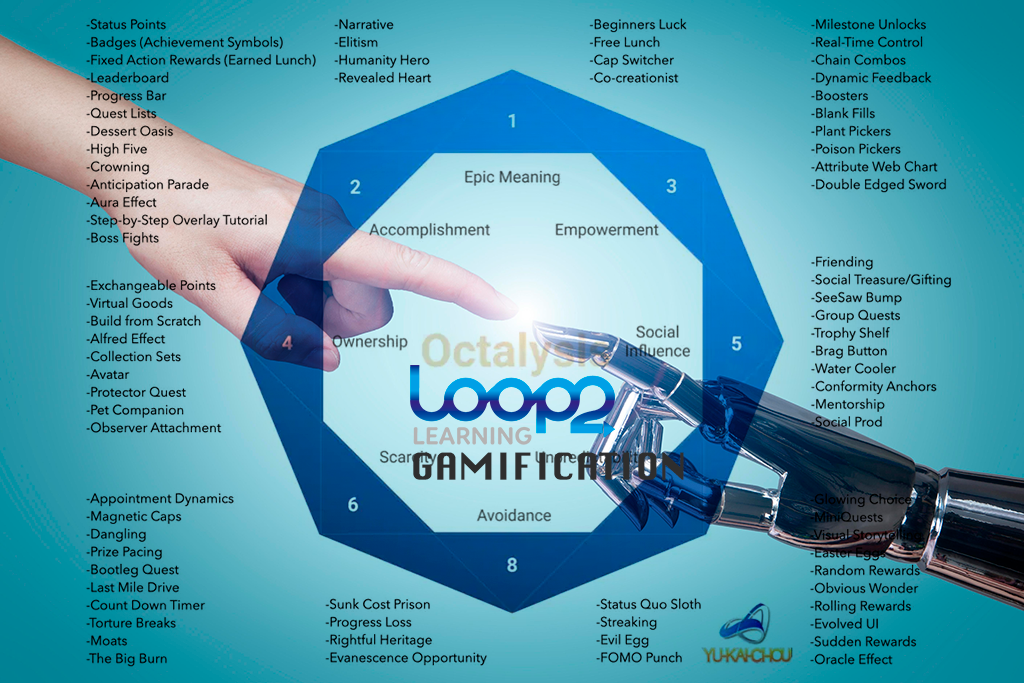Leveraging gamification and game-based learning is not a new concept in L&D. The elearning trend started gathering steam in 2018, and despite maintaining an upward trajectory, it has never climaxed.
Gamification in elearning refers to the use of fun game mechanics to drive learner engagement and boost retention rates. Initially, it was written off as a buzzword. However, the technique has gone on to defy all odds and establish itself as a pillar of modern elearning strategies. Today, businesses of different types and sizes are using gamification to increase the effectiveness of learning.
There’s no data to accurately tell how this elearning trend will pan out in the coming years. However, going by the latest statistics and its growing relevance, gamification is not going to fall off its zenith anytime soon. For example, revenues from game-based learning will increase to a whopping $28.8 billion by 2025 (Metaari, 2020).
Gamification allows enterprises, as well as learning institutions, to create intangible incentives that drive successful training results. The incentive can be a gift card or a financial reward, designed to induce a dose of internal competition among employees. Organizations use gamification to improve employees’ skills in an engaging way.
For example, an online course can be designed to reward learners points or badges based on the modules they complete. The goal is to inspire learners to surpass benchmarks set by colleagues and improve training ROI.
Overall, gamified elearning courses simplify the learning process. They make course content appealing to the learner, boost motivational levels, and enhance the retention of content. Most importantly, when used in corporate training, gamification helps foster an emotional and intensive learning experience.
-
Define the objectives
Start by clearly defining the objectives of your gamification process. What do you want to achieve? Do you want to increase user engagement, improve learning outcomes, motivate behavior change, or something else? Clearly stating your objectives will help guide the design of your gamification system.
-
Identify the target audience
Determine who your target audience is. Consider their demographics, interests, motivations, and preferences. Understanding your audience will enable you to design a gamification process that resonates with them.
-
Determine game elements
Choose the game elements that will be part of your gamification process. Game elements include points, badges, leaderboards, levels, challenges, rewards, and more. Select elements that align with your objectives and appeal to your target audience. For example, if your objective is to increase engagement, consider incorporating a leaderboard to foster competition.
-
Define rules and mechanics
Establish the rules and mechanics of your gamification process. Define how points are earned, what actions lead to badges or rewards, and how users progress through levels or challenges. Keep the rules simple and easy to understand, and ensure that they align with your objectives and target audience.
-
Design feedback and progression systems
Feedback is crucial in gamification. Determine how users will receive feedback on their progress, achievements, and performance. Provide immediate and meaningful feedback to keep users engaged. Additionally, design a progression system that allows users to advance through levels or unlock new challenges as they make progress.
-
Incorporate social elements
Consider incorporating social elements into your gamification process. This can include features such as leaderboards, collaborative challenges, or the ability to share achievements on social media. Social elements encourage competition, cooperation, and social interaction among users.
-
Test and iterate
Once you have designed your gamification process, test it with a small group of users and gather feedback. Analyze the results and iterate on your design to improve engagement and effectiveness. Continuously monitor and refine your gamification process based on user feedback and data analysis.
Ready to start?

